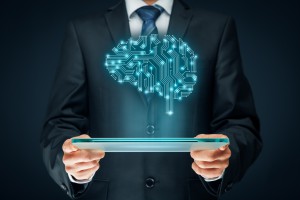 There’s more evidence that artificial intelligence (AI) and augmented reality (AR) are the future of mobile — and that businesses and developers ignore that at their peril. Computerworld reports that “Global spending on mobile hardware, software and services will rise this year by 3.2% to more than $1.6 trillion, pushed by developments such as augmented reality (AR), artificial intelligence (A.I.) and 5G, according to a new report from IDC.”
There’s more evidence that artificial intelligence (AI) and augmented reality (AR) are the future of mobile — and that businesses and developers ignore that at their peril. Computerworld reports that “Global spending on mobile hardware, software and services will rise this year by 3.2% to more than $1.6 trillion, pushed by developments such as augmented reality (AR), artificial intelligence (A.I.) and 5G, according to a new report from IDC.”
Phil Hochmuth, IDG's program director of Enterprise Mobility, explained to the magazine, “Overall, businesses will invest more in new devices and apps that enable A.I. and AR use cases for the business. On AR, businesses will spend on new mobile devices [and] hardware to help support enterprise use cases, such as medical AR, real-time data/schematic integration in industrial scenarios, etc.”
The article notes that AR headsets and smart glasses will also spur mobile spending, as will Apple’s inclusion of native augmented reality into iOS 11 last year, via its ARKit SDK. It adds, “Allowing businesses to leverage AR with devices they have already bought and deployed – namely iPhones and iPads – will only add to AR's growth in the enterprise.” Also spurring AR use is Microsoft’s Windows HoloLens ecosystem.
It’s not just in-office white collar staff who will use mobile-related AR, the article says, pointing out that “Augmented reality also enables assembly line workers, utility field workers and remote employees to call up schematics and get guidance from home offices via video and chat services.”
Apple and IBM, meanwhile, have been working together to enhance their existing AI collaboration with a focus on mobile, raccording to a Forbes blog post. They’ve combined Apple’s Core ML machine-learning tools for developers with IBM’s Watson to make it simpler for businesses to put artificial intelligence into mobile apps. Apple announced Core ML in June, 2017 as a way to make machine learning work more efficiently on iPhones. It supports a variety of machine learning tools, including neural networks, linear models and tree ensembles.
Core ML’s breakthrough is that it lets machine learning run directly on a mobile device, rather than requiring it to go out to the cloud. That eliminates lag time and protects data better, because less is being sent over the Internet. Especially important is that mobile devices will be able to use machine learning even when they’re not connected to the Internet.
For more about artificial intelligence and app development, read my blog post, “Artificial Intelligence: The Next Big Thing in Mobile" or download our comprehensive artificial intelligence and app development whitepaper ("Artificial Intelligence: What You Need to Know About the Next Big Boom in Mobile"), which covers:
- market data, processor advancements and sensor production advancements that have made artificial intelligence-powered mobile apps an everyday reality.
- practical examples of how companies are leveraging AI and machine learning with input from sensors to power better business apps.
- an actionable list developers can follow to start embedding AI into their apps to improve user experiences and decrease churn.
- 3 steps, with detailed links to resources, that developers can take to begin polishing their knowledge of AI technology and AI APIs for app development.
You can also read through some examples of how the oil and gas industry will benefit from the combination of artificial intelligence and mobile development.
Read more on the future of artificial intelligence in modern business apps.







Comment